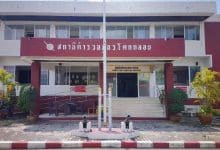Twenty years on, waves of Tsunami trauma still echoes in Phang Nga

Twenty years after the devastating 2004 Indian Ocean tsunami, survivors in Thailand’s Ban Nam Khem village in Phan Nga province still carry vivid memories of that fateful December morning. For Neungduangjai Sritrakarn, then a 20 year old college freshman, the day began with her mother’s urgent warning to evacuate their seaside home.
Sensing danger from unusual whitecaps on the Andaman Sea, and heeding a relative’s warning, the family gathered essential documents and fled on motorbikes. As they sped away, Neungduangjai witnessed an unprecedented sight: a massive wall of water, taller than their house, approaching the shore.
They made it roughly two kilometres before the tsunami caught up, knocking them from their bikes into the dark, debris-filled water.

The tsunami, triggered by a 9.1 magnitude earthquake off Indonesia’s Sumatra coast, claimed approximately 230,000 lives across twelve countries. Thailand’s Andaman coast alone lost 5,400 people, with 3,000 missing. Among them were five of Neungduangjai’s relatives, including her grandparents, with one uncle never found.
When she returned to Ban Nam Khem a week later, she recounted that her village was unrecognisable.
“There were bodies everywhere… I couldn’t recognise a single thing… Everything was different.”
Rising from ashes
The family’s shrimp farm was destroyed, but from its ruins, Neungduangjai has built a successful bar and restaurant overlooking the sea.

Today, while tourists enjoy the rebuilt coastline, reminders of the disaster remain: evacuation route signs, tsunami shelters, and memorial museums. For survivors like Somneuk Chuaykerd, who lost her young son while she was out fishing, even routine evacuation drills can trigger traumatic memories.
Though she keeps an emergency bag ready, the sound of warning sirens still paralyses her with fear, reports AP.
Despite the lingering trauma, many survivors choose to stay. Neungduangjai, who still experiences panic attacks when looking at the sea, explains why she chooses to remain.
“I’m still scared, but I have to live with it, because it’s my home. Some people moved away, but I did not. I’m still here.”
The story of Ban Neungduangjai reflects both the devastating impact of natural disasters and the resilience of communities in their aftermath. While the physical scars have largely healed over two decades, the emotional impact continues to shape the lives of those who experienced that terrible morning in 2004.
Latest Thailand News
Follow The Thaiger on Google News:


























